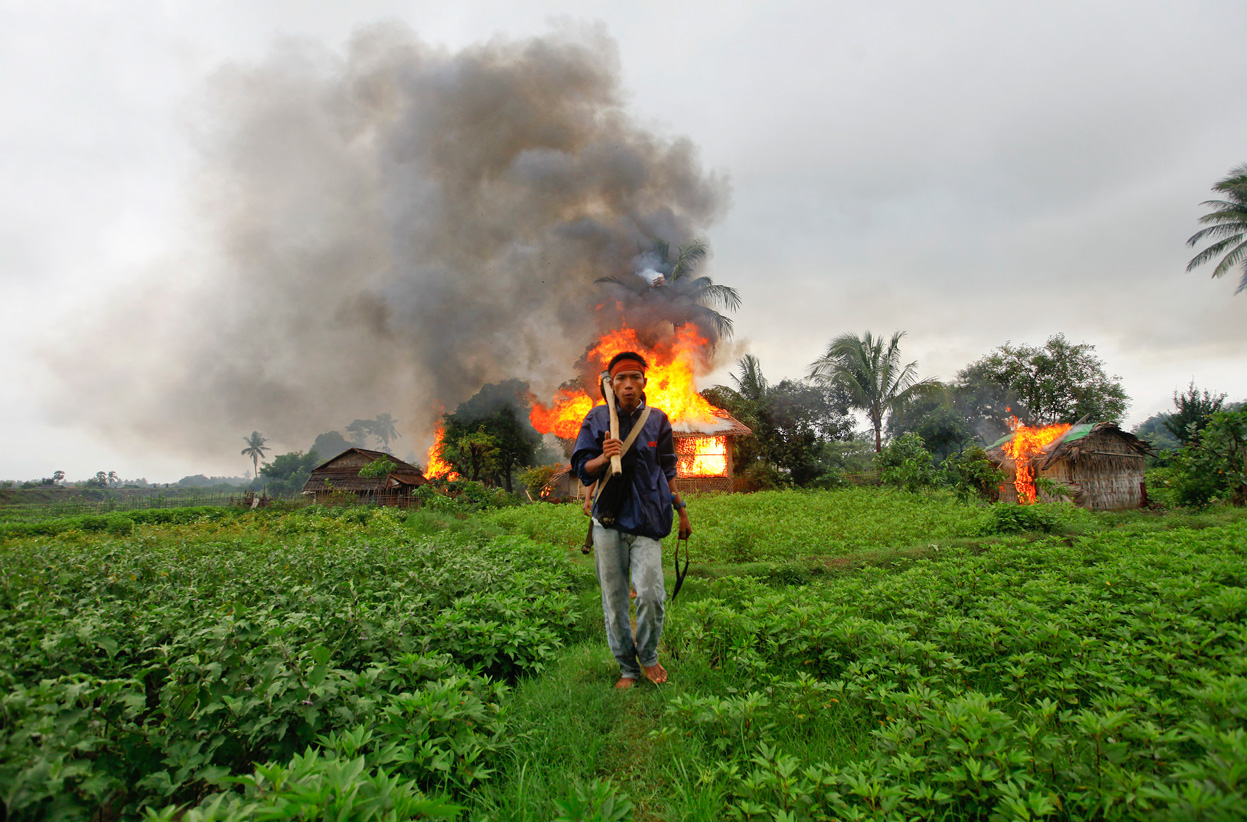*A version of this post originally appeared on Sentinel Project Intern Danny Hirschel-Burns’ personal blog, The Widening Lens.
The Rohingya in Rakhine state, a Muslim ethnic group in a predominantly Buddhist country, are one of the most persecuted minority groups in the world. Their situation has worsened in recent months with the rise of the ultra-nationalist 969 movement, led by Buddhist monk U Wirathu. The movement’s goal is fight against what they perceive as the increased influence of Islam in Burmese society. The current wave of violence began in May of 2012, when rumors of a rape/murder of a Buddhist woman by Rohingya men set off several incidences of violence. Though Rohingya have been involved in violence against Buddhist civilians, Buddhist mobs attacking Rohingya are responsible for the majority of the violence. While there is an international consensus that the Rohingya face heavy discrimination and persecution, there is debate over the chances of the future genocide and the existence of a current one.

Image courtesy of the Atlantic
To help frame this debate, Gregory Stanton’s theory that genocide has ten stages (updated from eight) is useful. The original eight are classification, symbolization, dehumanization, organization, polarization, preparation, extermination, and denial. Discrimination and persecution were added later on. These stages often happen out of order and/or concurrently. This article from UN dispatch provides an excellent summary of how each of the first six stages are happening, while a Rohinyga two child policy and the presence of Rohingya ghettos demonstrate discrimination and persecution, respectively.
While I fully agree with Greenwood’s post on the first six stages, her statement that the extermination stage is underway (though she includes the qualifier “arguably”) merits further examination. Based on current events, it’s hard to argue that extermination has begun. The killings have happened in bursts, and incidences of violence have happened mostly in response to specific incidents. These factors indicate that extermination mechanisms have not yet been fully activated. The rhetoric, the organization, and the ideology are all in place, and while the organization of Buddhist mobs can be utilized in the future to carry out mass killing in conjunction with government forces, killings, when they happen, remain on a small scale.
Extermination, however, does not have to happen through violent killings. Extermination can be carried out through reducing a population’s birthrate and creating physical conditions that are likely to lead to widespread deaths (the 1907 genocide of the Herero and Namaqua and the Armenian genocide both provide historical precedents of this strategy). The two child policy is clearly an attempt at the former. As for the latter, many Rohingya are forced to live in squalid IDP camps. Similarly, many Rohinyga have fled Burma in rickety boats, leading to many deaths, or at the very least permanent displacement due to a lack of Burmese citizenship. While these two issues may be products of discrimination, polarization, and persecution, they may also be part of larger strategy to eliminate the Rohingya. Without fully knowing the long-term intent and plans of Buddhist and government leaders, making informed judgments on whether the extermination stage has been reached is difficult.
